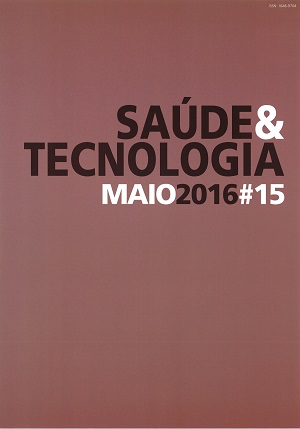Inspiratory muscle training in healthy individuals: randomized controlled trial
DOI:
https://doi.org/10.25758/set.1331Keywords:
Physical therapy, Inspiratory muscle training, PowerBreathe®, Aerobic capacityAbstract
Introduction – Inspiratory muscle training (IMT) emerges as an important intervention in people with COPD, but above all with a growing interest in the healthy population. However, there are not enough studies to prove if inspiratory muscle training is also reflected in the improvement of the aerobic capacity objectified in oxygen consumption (VO2). Therefore, more investigation is relevant to understand the real relationship between IMT and its results on healthy people. Thus, it was considered appropriate to carry out a research study on a healthy population that would allow assessing to what extent an inspiratory muscle training program induces changes in inspiratory muscle strength and aerobic capacity. Methods and analysis – The sample was based on healthy individuals (n=19) between 18 and 21 years old who perform the regular physical exercise (≥ 3 times a week or ≥ 4 hours per week). The aerobic capacity was estimated by the Ebbeling Test and inspiratory muscle strength was measured by the maximum inspiratory pressure (MIP) obtained by a specific dynamometer (MicroRPM®) at two different times (pre and post-workout). The above-mentioned sample was randomly divided into two groups (n=9 in the experimental group and n=10 in the control group). The experimental group (EG) was subjected to a high-intensity IMT (≥50% Pi, max) while the control group (CG) didn´t go through any intervention. The IMT was performed by PowerBreathe Classic® Level 1 and Level 2 which provides consistent and specific pressure for inspiratory muscle strength regardless of the individual's inspiratory flow. Conclusions – After the training, there was a 37% increase in EG PIM while the CG showed an improvement of 7%. In intergroup comparison, both groups increased significantly both MIP and VO2 (p<0.05). However, comparing both groups, the differences were significant for the PIM (p=0.000), but not for VO2. Further studies are required to assess in which conditions IMT produces changes in aerobic capacity.
Downloads
References
McConnell A. Respiratory muscle training: theory and practice. Edinburgh: Churchill Livingstone; 2013. ISBN 9780702050206
McConnell A. Breathe strong, perform better. Washington: Human Kinectics; 2011. ISBN 9780736091695
Sclauser Pessoa IM, Franco Parreira V, Fregonezi GA, Sheel AW, Chung F, Reid WD. Reference values for maximal inspiratory pressure: a systematic review. Can Respir J. 2014;21(1):43-50.
Brown PI, Johnson MA, Sharpe GR. Determinants of inspiratory muscle strength in healthy humans. Respir Physiol Neurobiol. 2014;196:50-5.
American Thoracic Society, European Respiratory Society. ATS/ERS Statement on respiratory muscle testing. Am J Respir Crit Care Med. 2002;166(4):518-624.
Enright SJ, Unnithan VB, Heward C, Withnall L, Davies DH. Effect of high-intensity inspiratory muscle training on lung volumes, diaphragm thickness, and exercise capacity in subjects who are healthy. Phys Ther. 2006;86(3):345-54.
Illi SK, Held U, Frank I, Spengler CM. Effect of respiratory muscle training on exercise performance in healthy individuals: a systematic review and meta-analysis. Sports Med. 2012;42(8):707-24.
McArdle WD, Katch FL, Katch VL. Fisiologia do exercício: energia, nutrição e desempenho humano. 5ª ed. Rio de Janeiro: Guanabara Koogan; 2003. ISBN 9788527718165
Mathers-Schmidt B, Brilla LR. Inspiratory muscle training in healthy adults: a treatment efficacy study [Internet, oral presentation]. Bellingham, WA: Western Washington University. Available from: https://chss.wwu.edu/file/bmsarticleimtefficacystudyhandoutpdf
PowerBreathe. Prescription user manual. London: Millennium Products; 2006.
Romer LM, McConnell AK. Specificity and reversibility of inspiratory muscle training. Med Sci Sports Exerc. 2003;35(2):237-44.
Kenney WL, Wilmore JH, Costill DL. Physiology of sport and exercise. 5th ed. Washington: Human Kinetics; 2011. ISBN 9780736094092
Ebbeling CB, Ward A, Puleo EM, Widrick J, Rippe JM. Development of a single-stage submaximal treadmill walking test. Med Sci Sports Exerc. 1991;23(8):966-73.
Volianitis S, McConnell AK, Koutedakis Y, McNaughton L, Backx K, Jones DA. Inspiratory muscle training improves rowing performance. Med Sci Sports Exerc. 2001;33(5):803-9.
Downloads
Published
Issue
Section
License
Copyright (c) 2022 Saúde e Tecnologia

This work is licensed under a Creative Commons Attribution-NonCommercial-NoDerivatives 4.0 International License.
The journal Saúde & Tecnologia offers immediate free access to its content, following the principle that making scientific knowledge available to the public free of charge provides greater worldwide democratization of knowledge.
The journal Saúde & Tecnologia does not charge authors any submission or article processing charges (APC).
All content is licensed under a Creative Commons CC-BY-NC-ND license. Authors have the right to: reproduce their work in physical or digital form for personal, professional, or teaching use, but not for commercial use (including the sale of the right to access the article); deposit on their website, that of their institution or in a repository an exact copy in electronic format of the article published by Saúde & Tecnologia, provided that reference is made to its publication in Saúde & Tecnologia and its content (including symbols identifying the journal) is not altered; publish in a book of which they are authors or editors the total or partial content of the manuscript, provided that reference is made to its publication in Saúde & Tecnologia.







